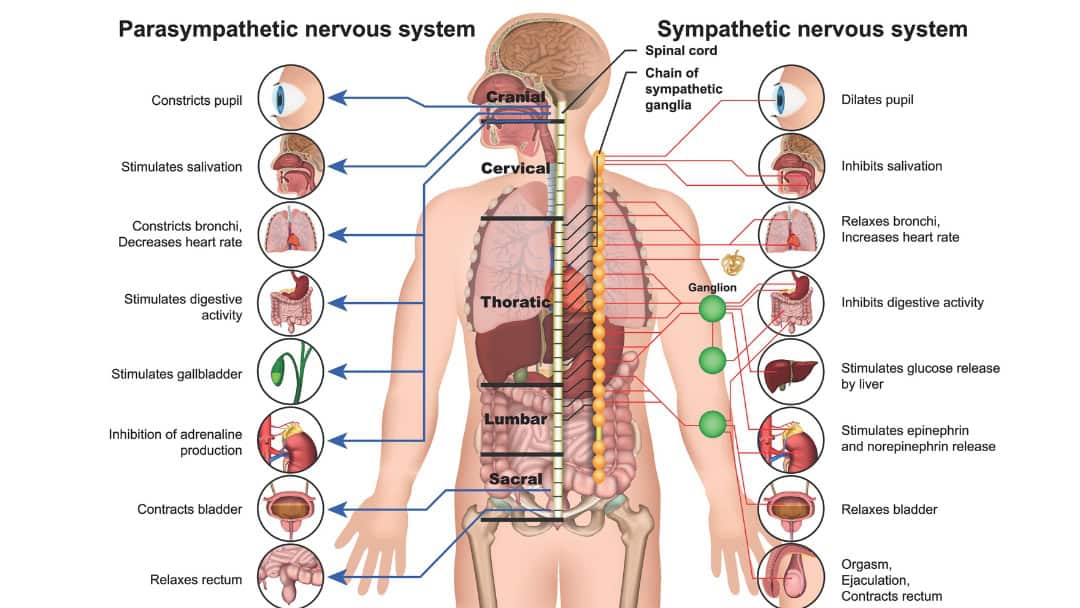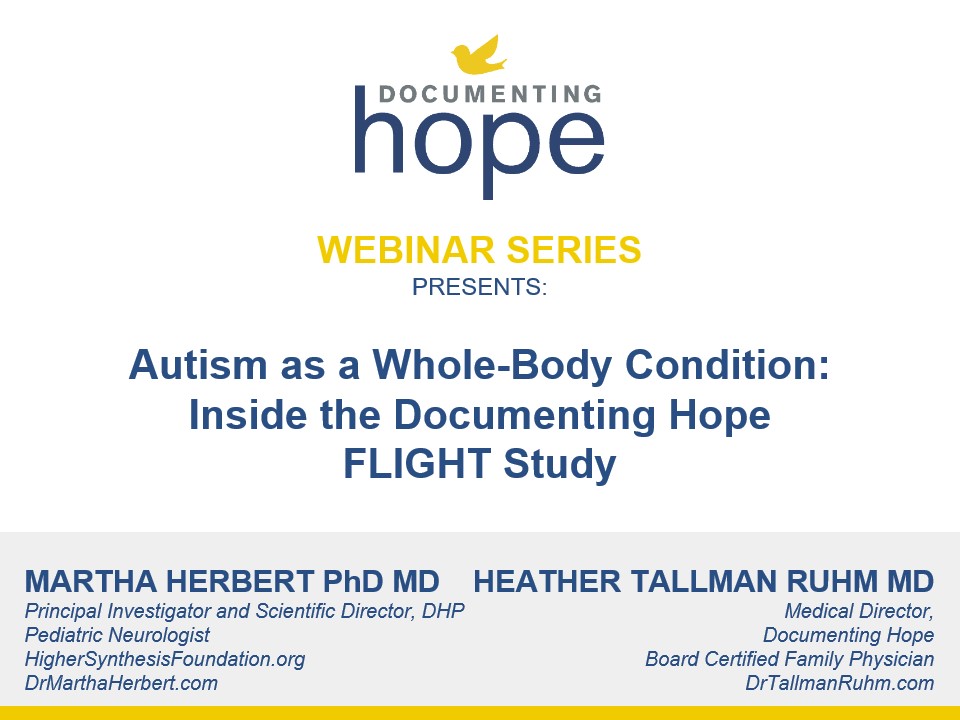The Autonomic Nervous System (ANS)
To truly understand what’s happening in the bodies and brains of children with autism, it helps to start with the autonomic nervous system (ANS)—the system that silently manages our involuntary functions like heart rate, breathing, digestion, and blood pressure. The ANS has two main branches that are designed to work in harmony:
The Sympathetic Nervous System (SNS)
The SNS is like the body’s gas pedal, triggering the fight-or-flight response in times of stress or perceived danger. It increases heart rate, blood pressure, and muscle tension—preparing the body to respond to threats.
The Parasympathetic Nervous System (PNS)
The PNS is the brake pedal. It supports rest, digestion, and repair, helping the body recover from stress and return to balance. A key part of this system is the vagus nerve, which not only calms the body but also plays a vital role in social connection, emotional regulation, and communication—areas that are often impacted in autism. The vagus nerve is also what connects the gut (the “second brain” or enteric nervous system) to the brain.
What Does a Healthy Nervous System Look Like?
In a healthy nervous system, these two branches work together to maintain balance. A person with a regulated nervous system can “toggle” easily back and forth between a sympathetic state and a parasympathetic state as stimulus from the environment changes. For example, when things in your environment (or even your thoughts!) make you feel afraid or overwhelmed, you’ll toggle into the sympathetic state. This state shunts blood and energy to your extremities so that you are ready to run, fight or escape danger. This can be experienced as a racing heart or flushed cheeks or even light-headedness.
On the other hand, if your thoughts or the environment make you feel relaxed and happy you’ve toggled into parasympathetic mode. The parasympathetic state allows you to truly rest, repair tissues, digest food and do the other bodily processes that can’t happen when you are stressed and in “fight or flight.” For many children dealing with non-acute illness or on the autism spectrum, this balance is chronically disrupted, leading to a condition called dysautonomia, where the autonomic nervous system can’t regulate properly. These children often remain stuck in a high-alert, fight-or-flight state, unable to fully shift into the calm, connected, and healing mode that their bodies so desperately need.
Common Signs and Symptoms of Nervous System Dysregulation in Children with Autism
How do you know if your child might have a dysregulated nervous system? Below are some common ways nervous system dysregulation can be identified in children with autism:
- Heightened Anxiety and Emotional Reactivity: Increased anxiety levels and heightened or extreme emotional responses or the inability to regulate or resolve emotions once triggered
- Sleep Disturbances: Difficulties with sleep, including problems falling asleep and staying asleep
- Gastrointestinal Issues: Trouble with constipation, diarrhea or abdominal pain
- Sensory Sensitivities: Increased sensitivity to sensory stimuli (e.g., sounds, lights, textures) which often indicates sympathetic dominance
- Elevated Heart Rate and Reduced Heart Rate Variability: These signs of sympathetic dominance are commonly observed in children with autism
- Irritability: Including moodiness, touchiness
Cell Danger Response
A persistent stress state is closely linked to the cell danger response (CDR)—a protective cellular process triggered by stress, toxins, infections, or metabolic dysfunction. In children with autism, the CDR may get “stuck,” leaving cells in a defensive mode that interferes with normal development, healing, and communication between cells. This biological “red alert” status can amplify inflammation, disrupt energy production, and impair social and cognitive function.
Many children with autism also experience sensory sensitivity, where sounds, lights, textures, or even internal sensations (like digestion) are perceived as overwhelming or threatening. This hypersensitivity feeds into the ongoing stress loop, reinforcing the activation of the fight-or-flight response, and keeping that individual in “fight or flight.”
In Conclusion
Nervous-system dysregulation in autism is a whole-body issue. The nervous system, the immune system, the metabolic system, and the brain’s chemical messengers are all involved. And when the parasympathetic “braking system” can’t activate properly, healing, learning, and connection become much harder. Supporting nervous system regulation is a critical step in helping children with autism feel safe and connected, but it is also a foundation for getting the body into a state where it can actively heal and repair.
About Heather Tallman Ruhm MD
Heather Tallman Ruhm MD is the Medical Director of the Documenting Hope Project. She is a Board Certified Family Physician whose primary focus is whole-person health and patient education. She draws on her conventional western training along with insights and skills from functional, integrative, bioregulatory and energy medicine. She believes in the healing capacities of the human frame and supports the power of self-regulation to help her patients recover and access vitality.

About Beth Lambert
Beth Lambert is a former healthcare consultant and teacher. As a consultant, she worked with pharmaceutical, medical device, diagnostic and other health care companies to evaluate industry trends.
She is the author of A Compromised Generation: The Epidemic of Chronic Illness in America’s Children (Sentient Publications, 2010). She is also a co-author of Documenting Hope's Brain Under Attack: A Resource for Parents and Caregivers of Children with PANS, PANDAS, and Autoimmune Encephalitis. She is a co-author of Reversal of Autism Symptoms among Dizygotic Twins through a Personalized Lifestyle and Environmental Modification Approach: A Case Report and Review of the Literature, J. Pers. Med. 2024, 14(6), 641.

In 2009, Beth founded Documenting Hope and currently serves as Executive Director. Beth attended Oxford University, graduated from Williams College and holds a Masters Degree in American Studies from Fairfield University.
Still Looking for Answers?
Visit the Documenting Hope Practitioner Directory to find a practitioner near you.
Join us inside our online membership community for parents, Healing Together, where you’ll find even more healing resources, expert guidance, and a community to support you every step of your child’s healing journey.







